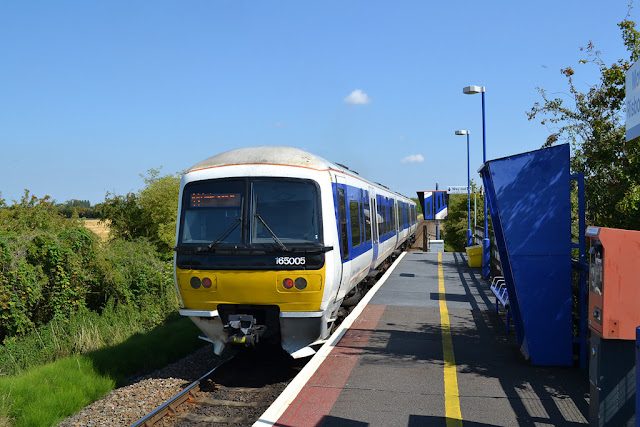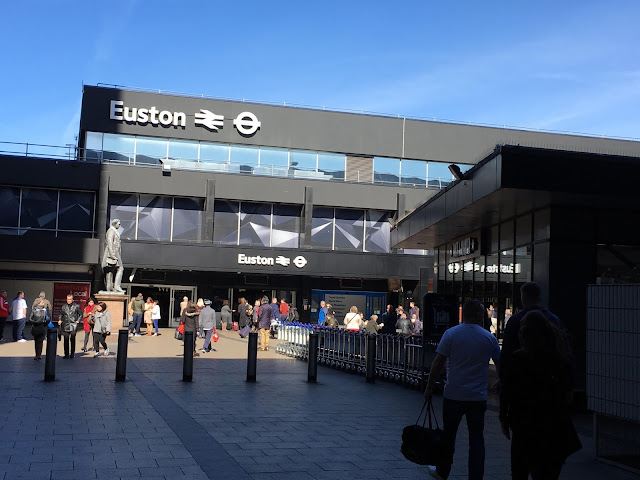| Information |
| Type: |
Transport for London
(Northern & Victoria Lines) |
| Station code: |
ZEU |
| Opened: |
1907 |
| Platforms: |
6 |
London Euston mainline station opened in 1837 and soon became very busy being one of the major routes into London from the North. Naturally taking advantage of the passenger traffic travelling through the station was attractive to the developers of London's underground railways in the late 1800s and early 1900s.
Two companies gained approval to build underground links through Euston, the City & South London Railway and Charing Cross, Euston & Hampstead Railway. However the land was owned by the London & North Western Railway and the companies had to build separate station buildings [1]. The stations, although separate, were connected by passageways underground. In 1914 the two companies were united as part of the Underground Group and rationalisation began with one of the station buildings being closed. These two separate lines became the two branches of the Northern Line, Euston having platforms for both branches.
The biggest change came with the arrival of the Victoria Line in the 1960s (along with the major rebuilding of the mainline station above). A new larger ticket hall was built under the mainline station concourse and the one of the lines of Bank branch Northern Line was diverted to allow for new wider platforms replacing the original narrow island platform [2]. A number of the original passageways were closed off to the public though remain in use for staff use and storage. Some still retain posters from the 1960s. The main entrance into the tube station is now via the mainline station concourse.
Euston tube station is a very busy one with over 40 million entries and exits a year. It could get even busier in future if plans for a new Crossrail2 station connecting with the tube station are realised.
 |
| Northern Line 95ts train 51674 arives |
 |
| One of the former passenger tunnels |
 |
| Posters dating from the 1960s still in place in the non-public tunnels |
 |
| Platform viewed from the air shaft |
 |
| More posters and some of the original tiling |
 |
| Former ticket office for people interchanging between the two separate lines |
 |
| Victoria Line platform |
[1] Chris Nix and Siddy Holloway, Euston Underground Station - the lost tunnels (London Transport Museum, 2016) p. 4
[2] Ibid p. 12






















